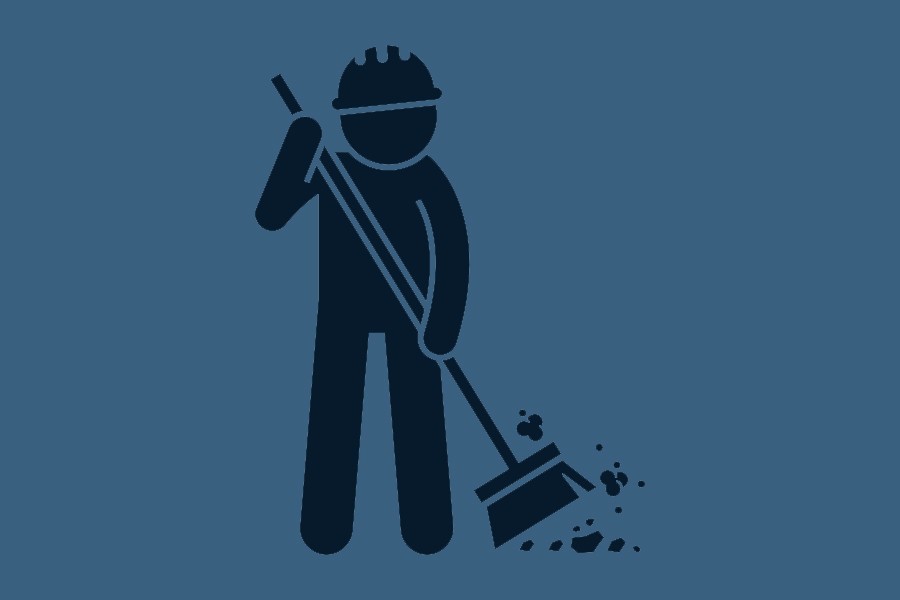
Published :
Updated :

It was a pulsating sight at the centre point of Dhaka city on Friday last when thousands of residents participated in a token street cleaning drive. At the call of the Mayor of the southern segment of the metropolis, about fifteen thousand people enthusiastically collected debris and broom-brushed a kilometre of a major road at the heart of the city for over an hour. It was a symbolic gesture but with a great bearing.
The event itself with such a massive participation immediately graduated to be a new record of such kind in the Guinness Book of World Records. The earlier record of such mass cleaning drive was in the Indian city of Vadodara with participation of five thousand people only. The new record obviously strengthens the morale of the participants in particular and all others in the country.
Clearly, Dhaka city needed a big punch in cleanliness. With 20 million people domiciled - and the number is increasing every new day due to migration, this city is already well known to be in great disarray in any habitation index. The traffic mobility is frustrating, reign of dust and air pollution is getting evidently stronger and not to talk about the dirt and filth that seems visibly traceable in almost every nook and corner of the fast growing megacity.
Waste management in Dhaka has always been in question. No doubt a lot of efforts was made to improve the waste management scenario, there was always a lack of sustainable planning. Corruption, negligence and dearth of skilled manpower have been the major barriers to implementing appropriate waste management plans. However, the City Corporations stress on lack of fund and proper equipment to be the root causes.
It is imperative that our city or cities have to have cleaner environment. Garbage piles up on road sides, dirty water spills here and there, drains are clogged and streets are littered. Added to these are polluted air which the residents and visitors are compelled to inhale. All these are serious health hazards and proven to be causing enormous dent in the fabric of national productivity and health costs.
The token cleanliness drive on Friday last was definitely a bold and significant initiative. More important was the participation of people in such great number. However, the question surfaces --- what next?
The most important aspect for any such campaign would be awareness and interest of the people. There should be continuous efforts of making people aware that they have the primary responsibility to ensure cleanliness. While our print and electronic media can take a lead in scrolling such messages, teachers at educational institutions must embed these civic senses among their students.
With population growing and consumerism increasing unabated, it is already high time for us to deduce the formula of a better living, safe from all kinds of hazards. Not much can be achieved through ceremonial exposition of our intents but through agreeing to showcase our individual responsibility in keeping our cities clean. This will contribute to improving the worth of our habitat.


 For all latest news, follow The Financial Express Google News channel.
For all latest news, follow The Financial Express Google News channel.